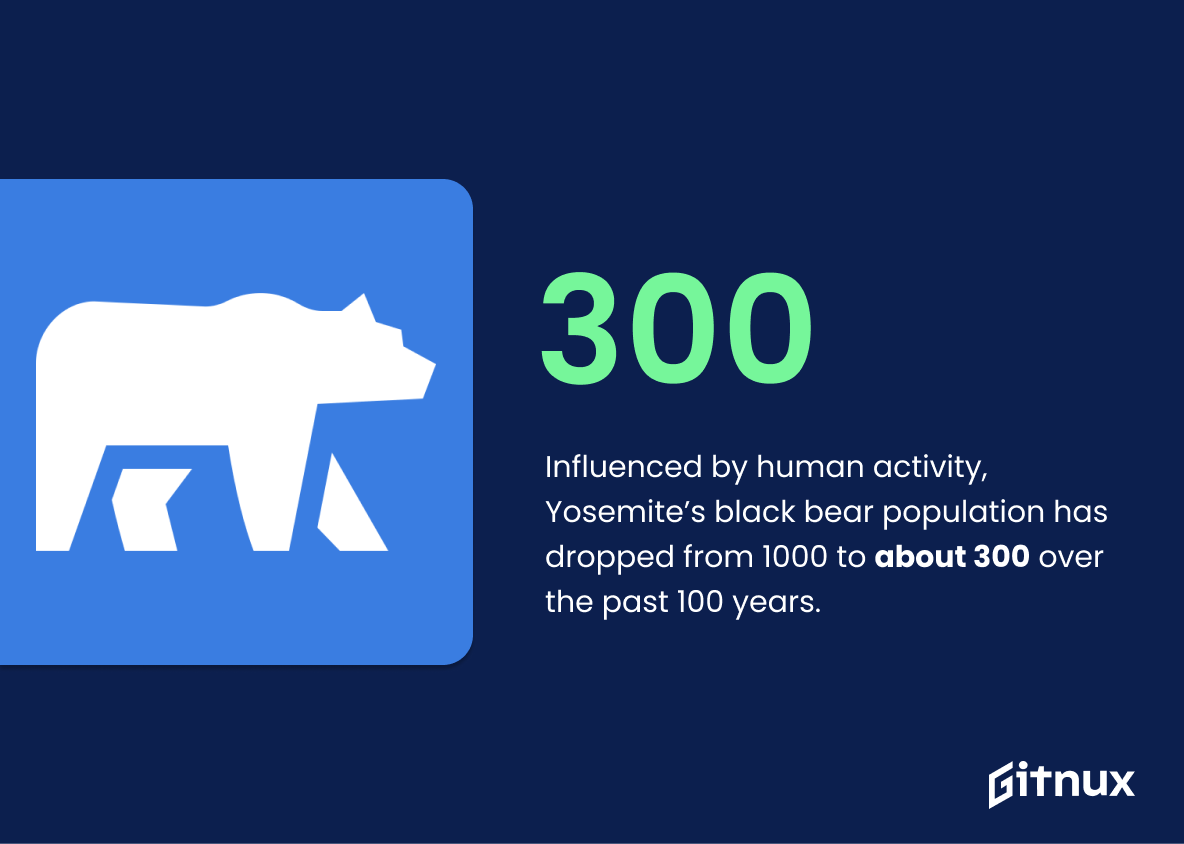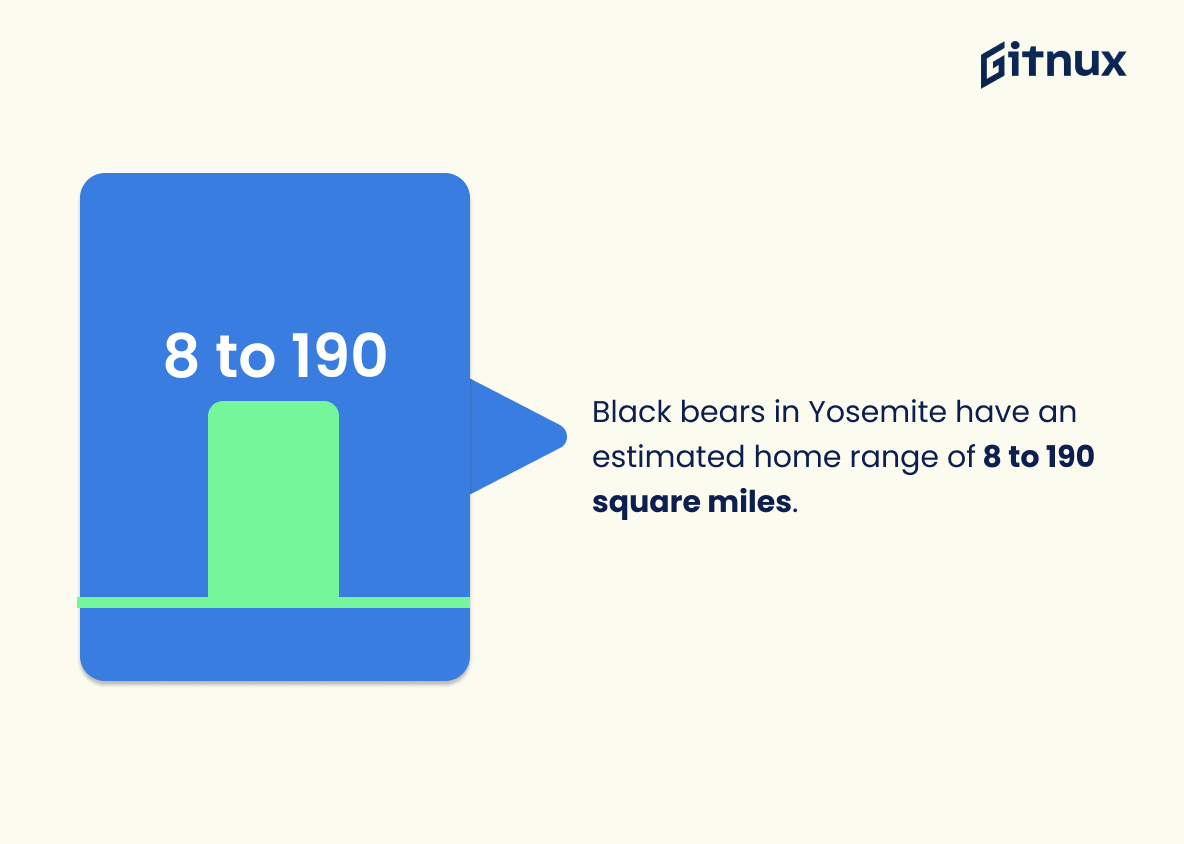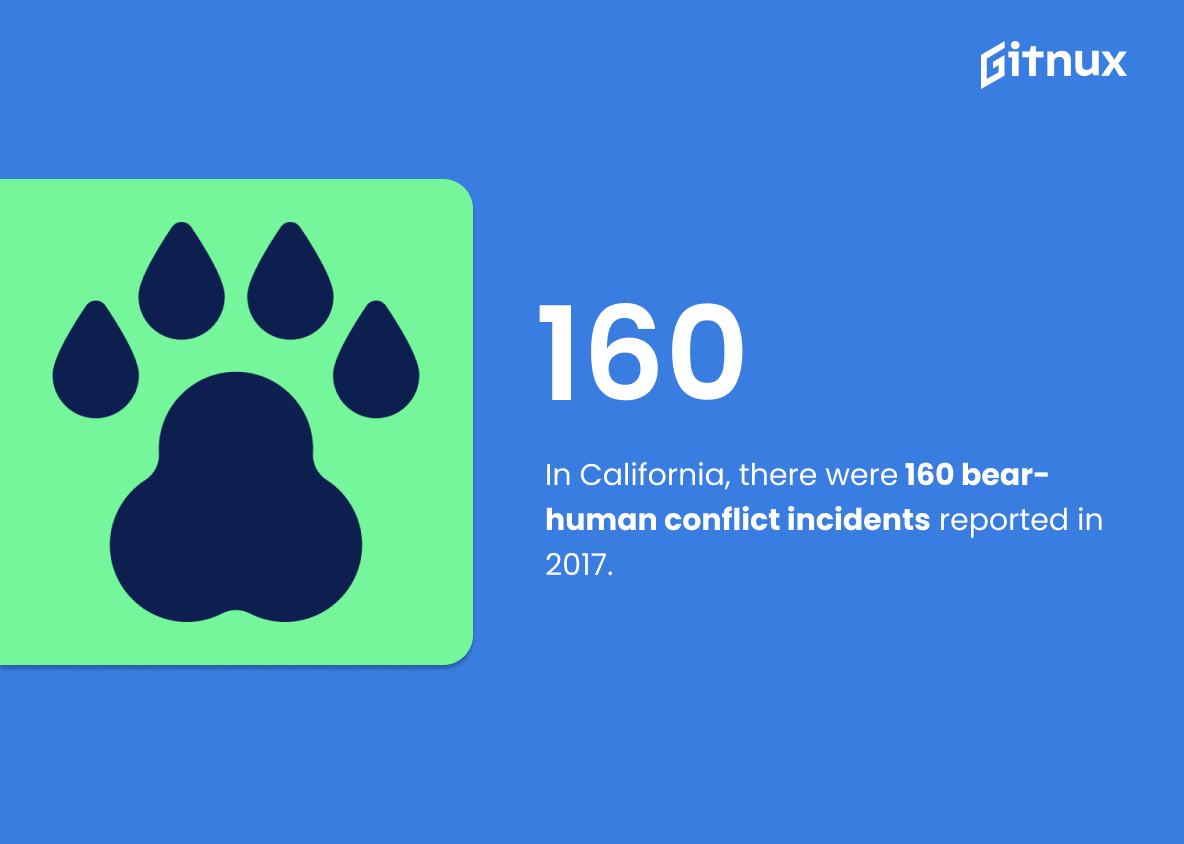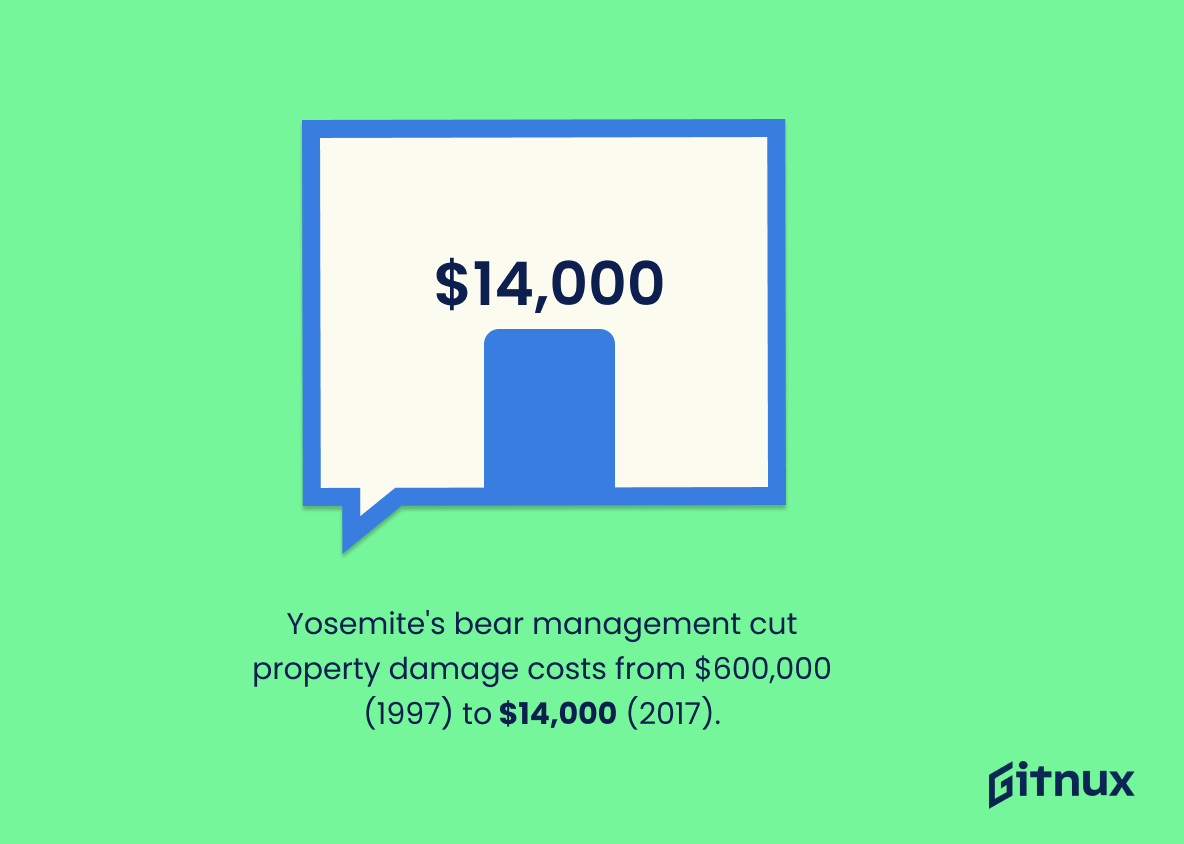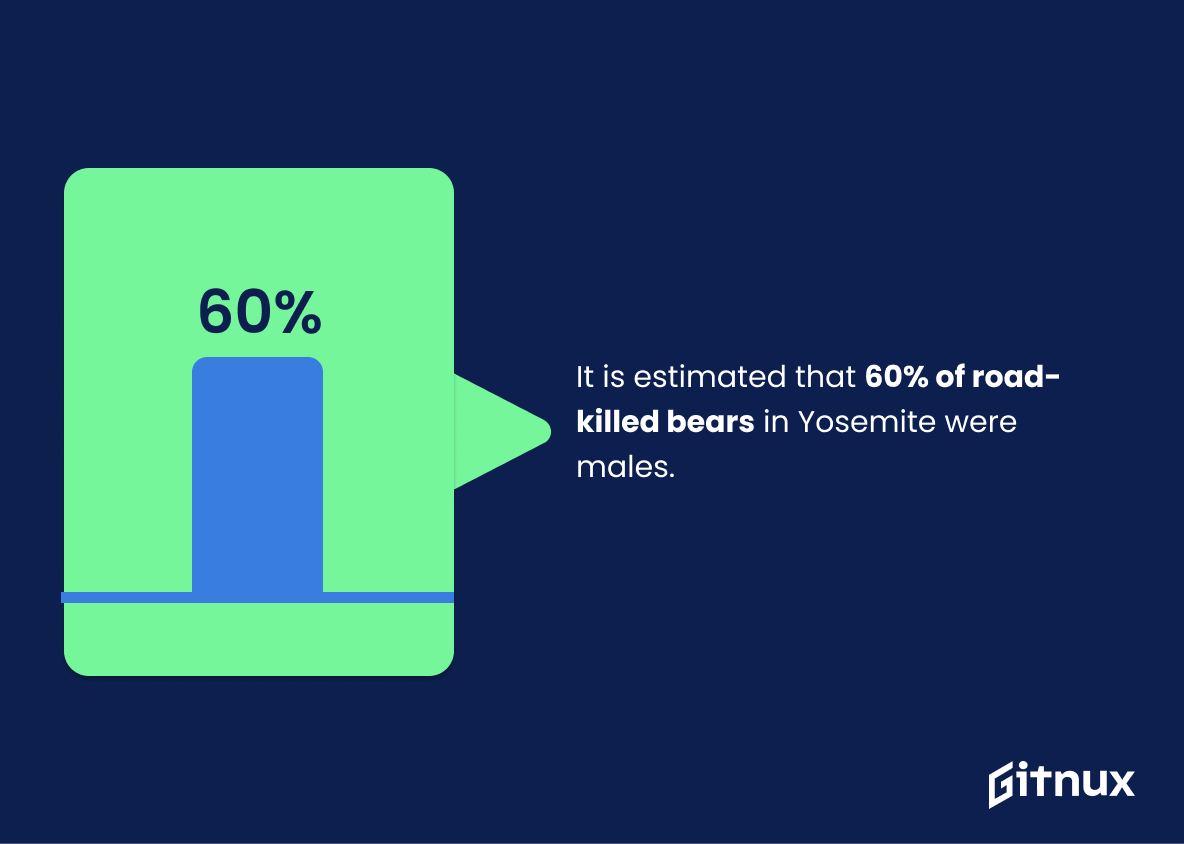Welcome to our blog post about Yosemite Bear Attack Statistics. We will be exploring the various bear attack statistics in and around Yosemite National Park, from 1980 until now. From a total of 15 attacks since 1980 to an estimated 60% of road-killed bears being males, we’ll cover it all. Additionally, we’ll look at how human activity has impacted the black bear population over time as well as what steps have been taken by park officials to reduce incidents with bears. So let’s dive into these fascinating facts and figures.
Yosemite Bear Attack Statistics Overview
Influenced by human activity, Yosemite’s black bear population has dropped from 1000 to about 300 over the past 100 years.
This statistic is a stark reminder of the devastating impact human activity has had on the black bear population in Yosemite. It serves as a reminder of the fragility of the environment and the need to take action to protect the wildlife in the area. It also provides a context for understanding the bear attack statistics, as a smaller population of bears may be more likely to come into contact with humans.
Fewer than 40 bear attacks in US national parks have been fatal since 1900.
This statistic is a testament to the safety of US national parks, showing that despite the occasional bear attack, the risk of fatality is low. It is a reassuring reminder that visitors to Yosemite and other national parks can enjoy their time in nature without fear of serious harm.
From 2011 to 2017, bear incidents (including damage to property, seeking human food or acting aggressively) dropped 99% at Yosemite’s developed areas.
This statistic is a testament to the success of Yosemite’s bear management program, demonstrating that their efforts to reduce human-bear conflicts have been highly effective. It is a powerful reminder that with the right strategies in place, it is possible to protect both humans and bears in their natural habitats. This is an important point to make in a blog post about Yosemite Bear Attack Statistics, as it shows that it is possible to coexist with bears in a safe and responsible way.
Black bears in Yosemite have an estimated home range of 8 to 190 square miles.
The statistic regarding the home range of black bears in Yosemite is an important factor to consider when discussing bear attack statistics. Knowing the size of the area in which the bears are likely to roam gives us a better understanding of the potential risk of a bear attack. It also helps us to identify areas of the park that may be more prone to bear encounters and, as a result, more likely to experience bear attacks.
The chance of being injured by a bear in Yosemite is about 1 in 2.7 million.
This statistic is a testament to the rarity of bear attacks in Yosemite, providing a sense of security to those who visit the park. It serves as a reminder that, while it is important to be aware of the potential danger of bears, the chances of being injured by one are incredibly slim.
In California, there were 160 bear-human conflict incidents reported in 2017.
This statistic is a crucial piece of the puzzle when it comes to understanding the Yosemite Bear Attack Statistics. It provides a broader context to the issue, showing that bear-human conflict incidents are not isolated to Yosemite, but are a statewide problem. This statistic helps to illustrate the magnitude of the issue and the need for further research and action.
The success of Yosemite’s bear management strategy led to a decrease in estimated property damage cost from over $600,000 in 1997 to $14,000 in 2017.
This statistic is a testament to the effectiveness of Yosemite’s bear management strategy, demonstrating the positive impact it has had on reducing property damage costs. It is a clear indication that the strategy is working, and serves as a reminder of the importance of proper bear management in the park.
There has been a 97% reduction in incidents of bears entering vehicles in Yosemite’s Tuolumne Meadows since 2012.
This statistic is a testament to the success of the efforts to reduce bear-human interactions in Yosemite’s Tuolumne Meadows. It shows that the strategies implemented to protect both bears and visitors have been effective, resulting in a dramatic decrease in incidents of bears entering vehicles. This is a positive development that should be celebrated and further encouraged.
It is estimated that 60% of road-killed bears in Yosemite were males.
This statistic is a telling indication of the dangers that male bears face in Yosemite. It suggests that male bears are more likely to be killed on the roads than female bears, which could be due to a variety of factors such as their size, behavior, or even their mating habits. This statistic is important to consider when discussing bear attack statistics in Yosemite, as it provides insight into the risks that male bears face in the area.
Conclusion
The statistics presented in this blog post demonstrate that bear attacks and incidents of bears entering vehicles or damaging property are relatively rare occurrences at Yosemite National Park. Despite the park’s large number of visitors, there have been only 15 reported bear attacks since 1980, with fewer than 40 fatal ones across all US national parks since 1900. Furthermore, due to successful management strategies implemented by the park over the past two decades, such as providing food storage lockers for campers and using rubber bullets to scare away aggressive bears from developed areas, incidents involving bears have decreased significantly. As a result of these efforts combined with increased public awareness about how to safely interact with wildlife while visiting Yosemite National Park has made it an increasingly safe place for both humans and animals alike.
References
0. – https://www.www.sfchronicle.com
1. – https://www.www.yellowstonepark.com
2. – https://www.www.nps.gov
3. – https://www.www.mercurynews.com
4. – https://www.www.nationalparks.org
5. – https://www.www.yosemite.com
6. – https://www.www.npca.org
7. – https://www.escholarship.org
8. – https://www.www.hcn.org
